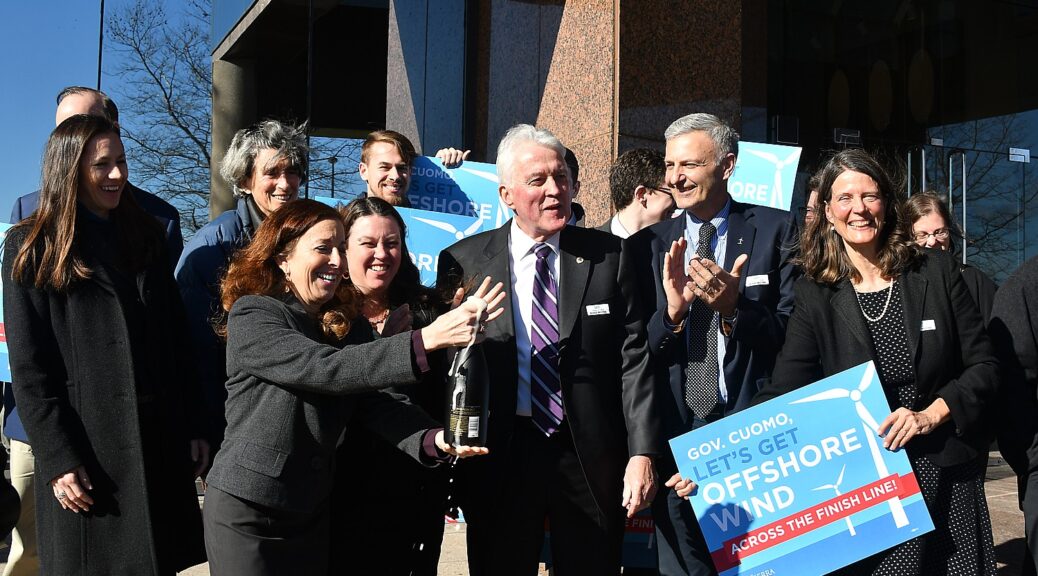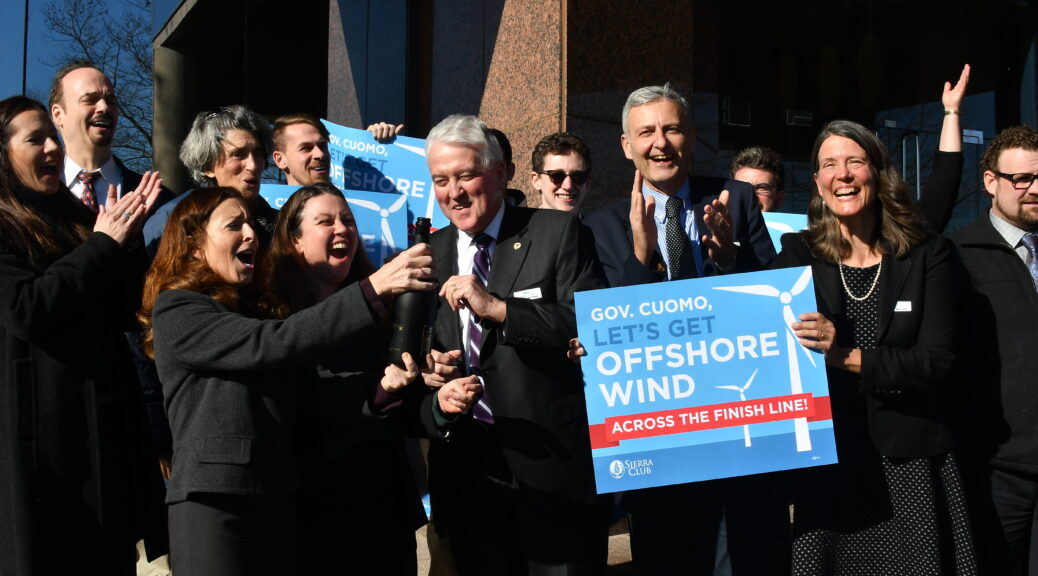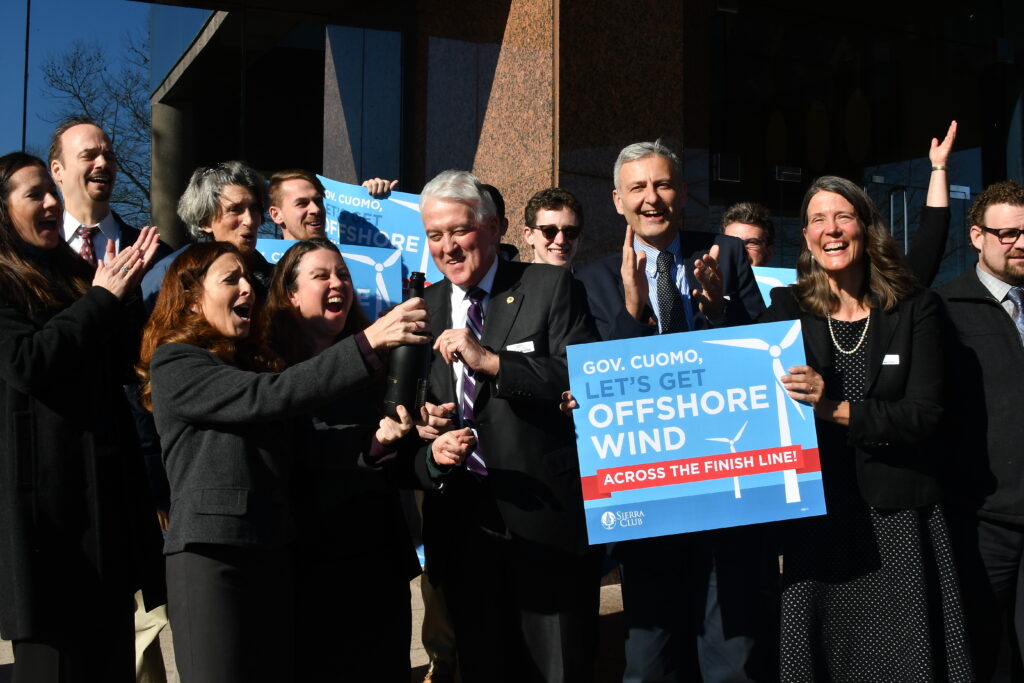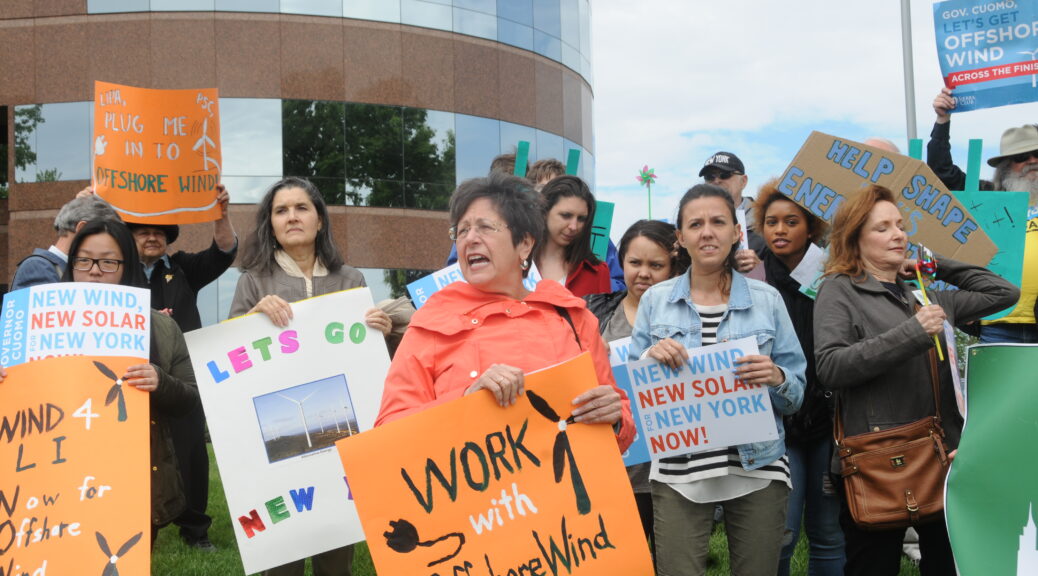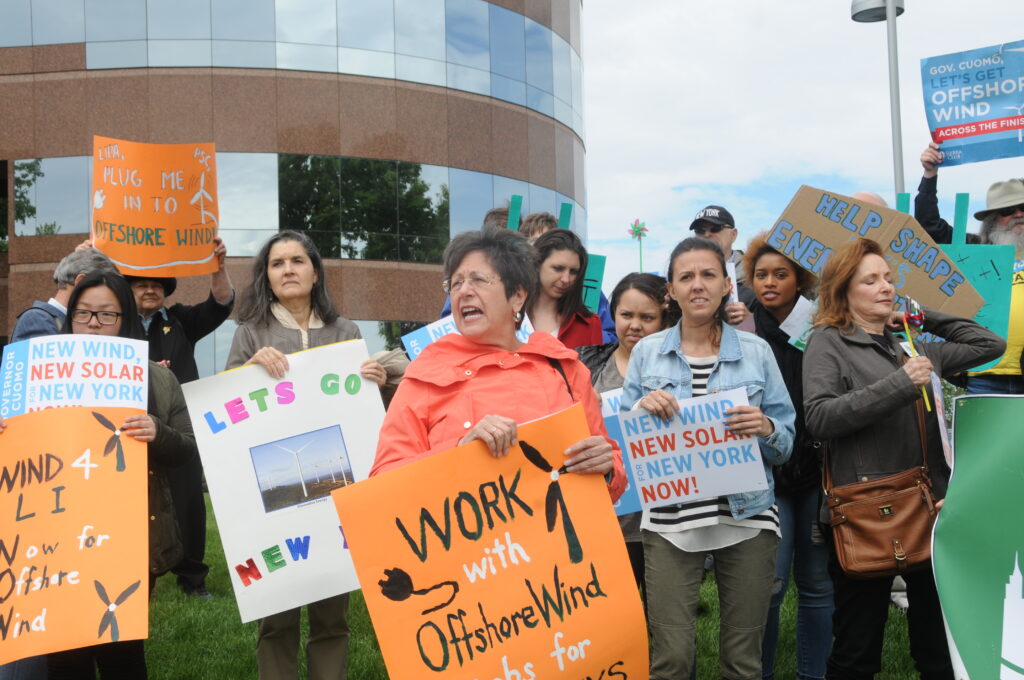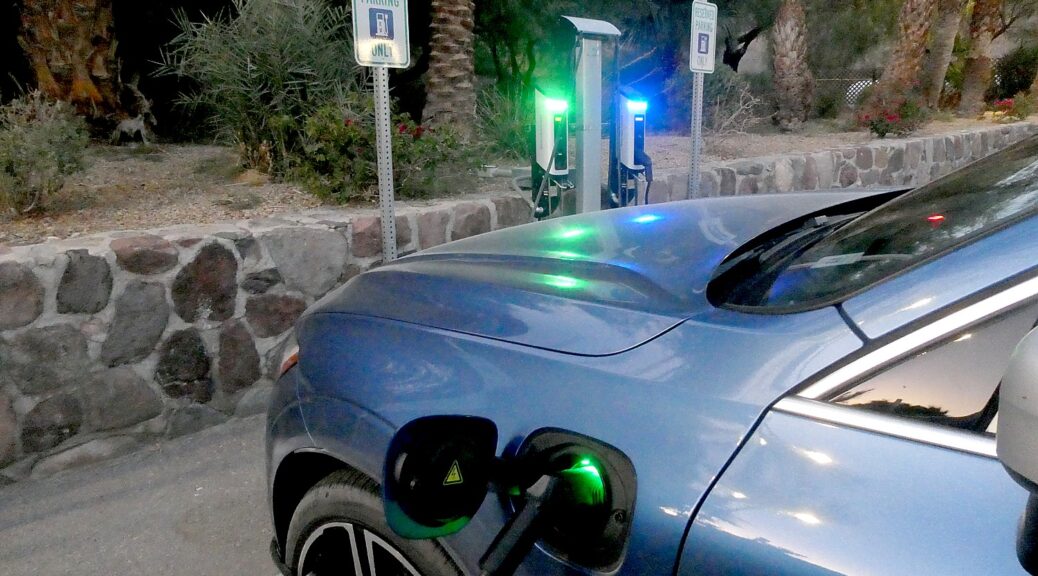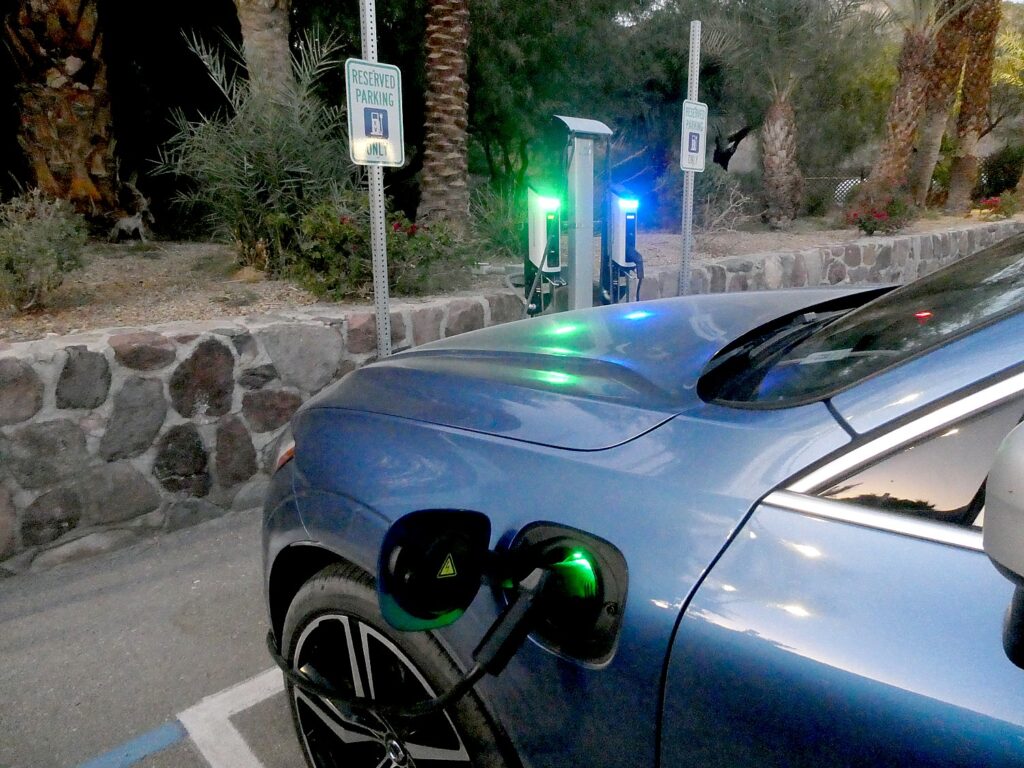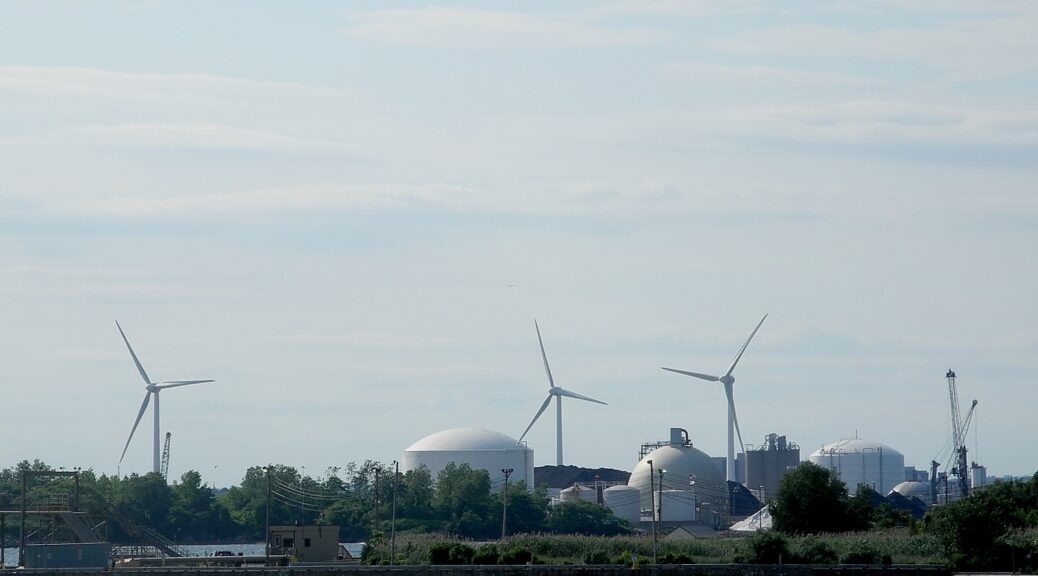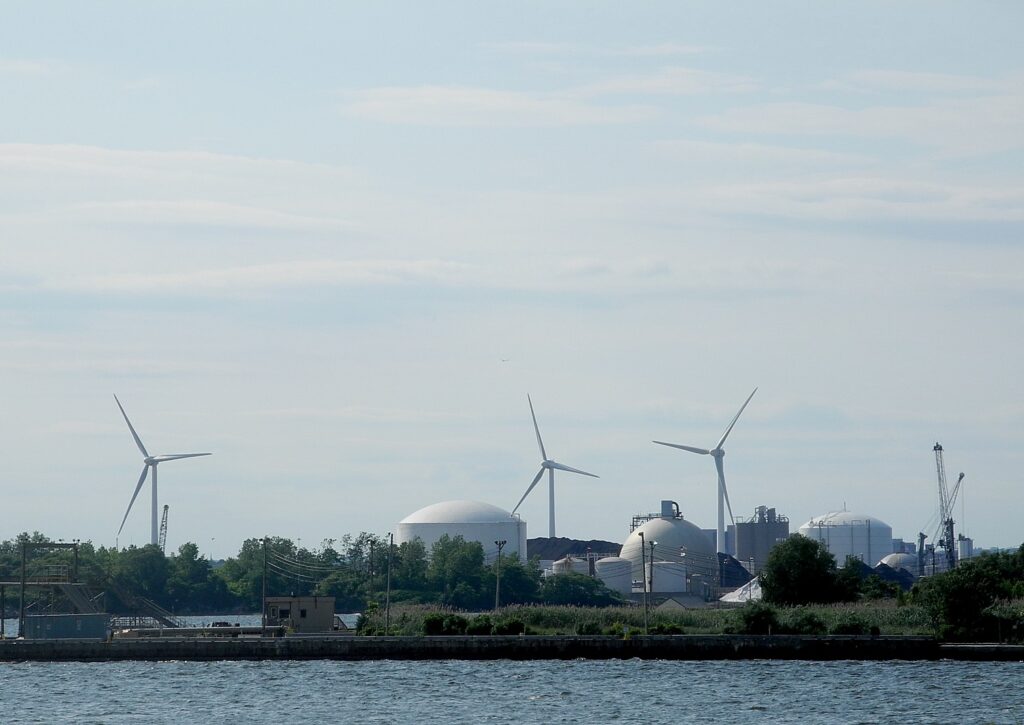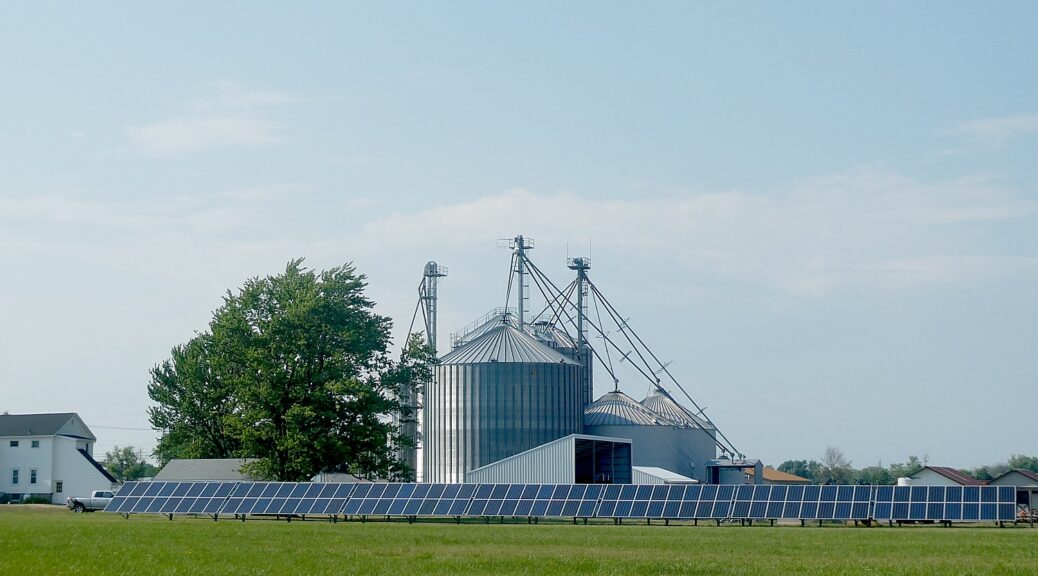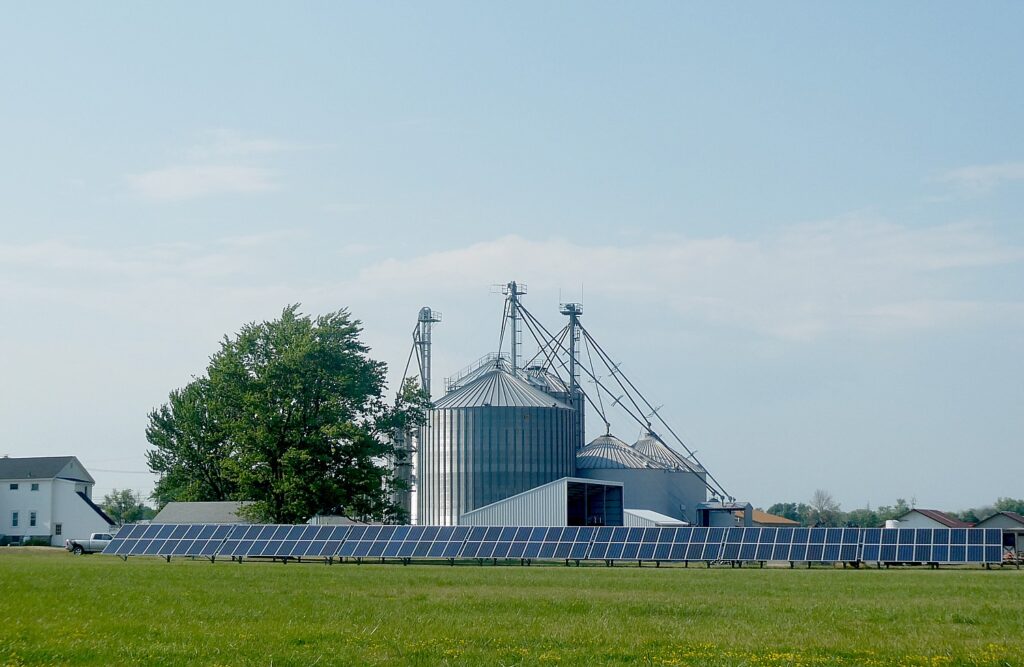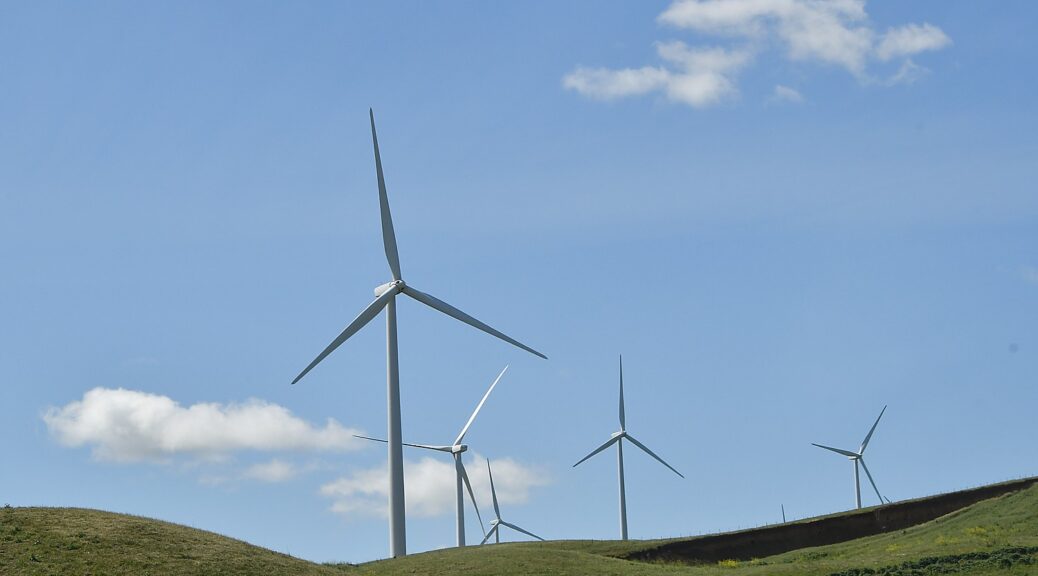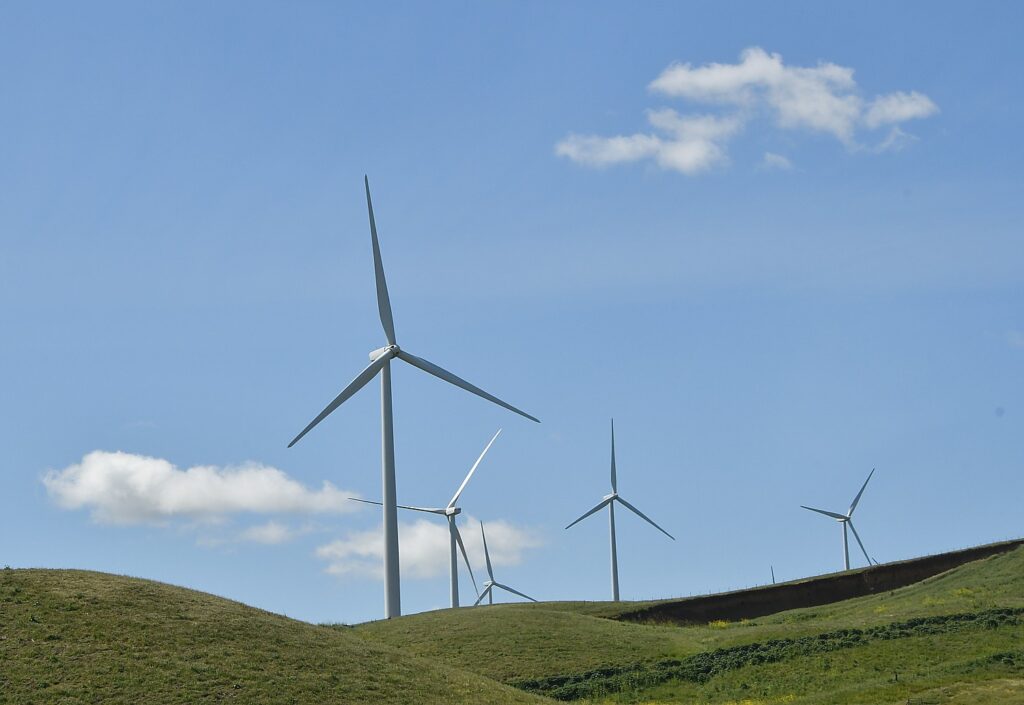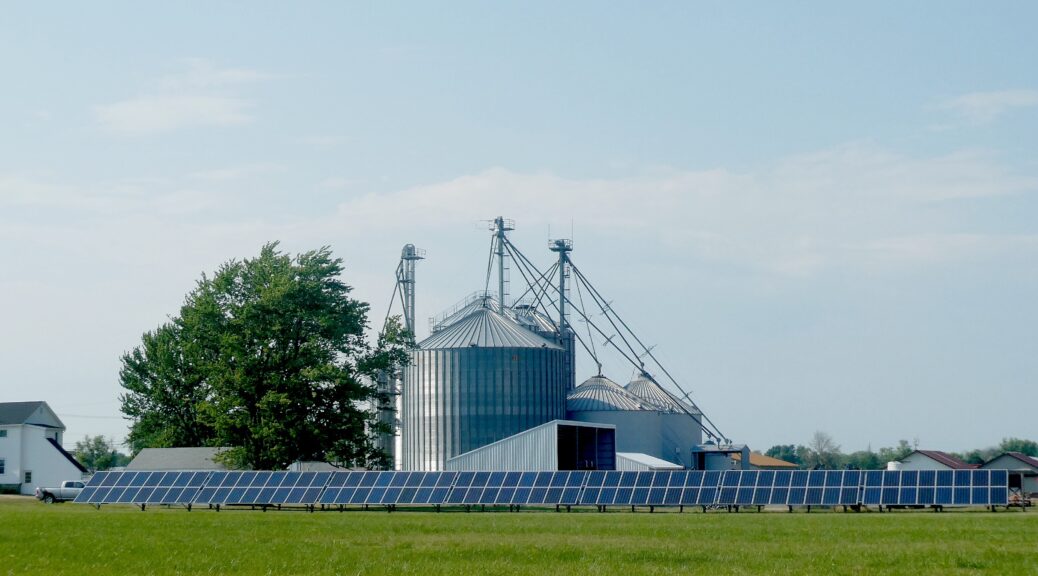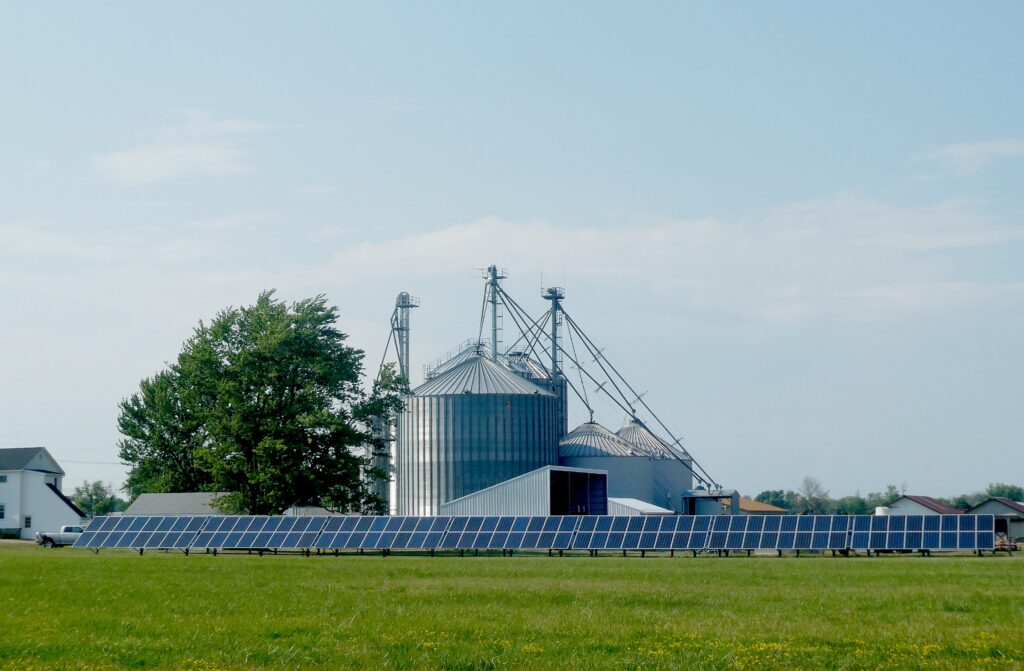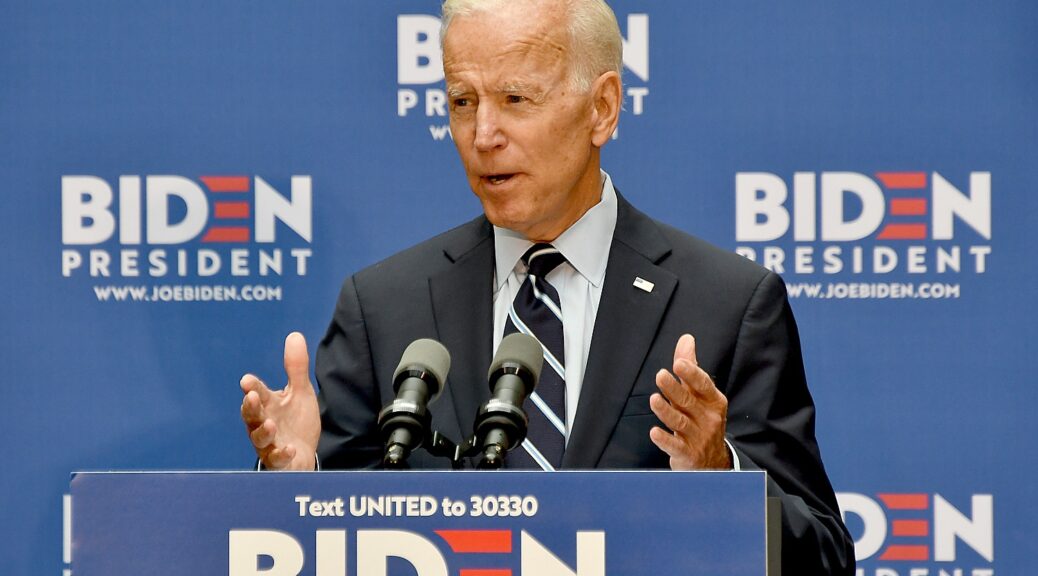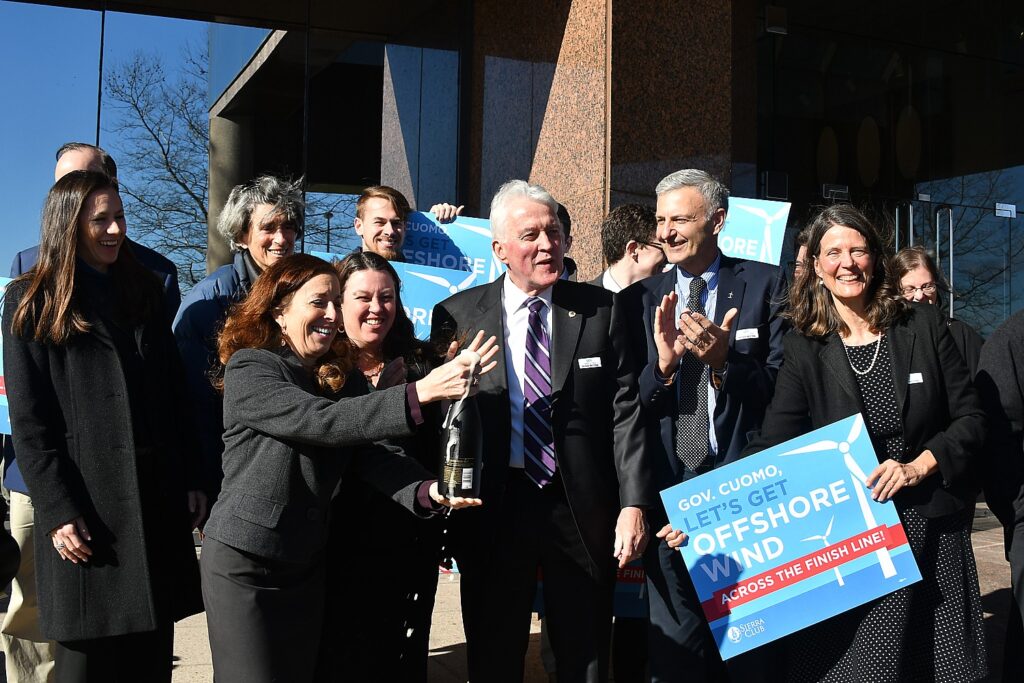
New York State Governor Kathy Hochul today at the Port of Albany, alongside U.S. Secretary of Energy Jennifer M. Granholm, Congressman Paul Tonko and other elected officials, announced the finalization of contracts between the New York State Energy Research and Development Authority (NYSERDA) and Empire Wind Offshore LLC and Beacon Wind LLC, each a 50-50 partnership between Equinor and bp, for the Empire Wind 2 and Beacon Wind offshore wind projects, representing a key milestone in the advancement of offshore wind development in New York State.
“We know what it takes to build and sustain for the future, it’s in our DNA as New Yorkers,” Governor Hochul said. “By advancing these significant offshore wind projects, we can maintain our cadence for developing projects that will spur much-needed green job creation and investment. No state has felt the impacts of climate change more than New York State, and now more than ever, we can continue to lead the way with our ambitious, nation-leading vision to transition to a renewable energy and a cleaner, greener future.”
Today’s announcement formally closes the State’s second offshore wind competitive solicitation and also includes the first awards for the State’s Offshore Wind Training Institute. Coupled with this week’s issuance of the Bureau of Ocean Energy Management’s (BOEM) Final Sale Notice for the New York Bight and the State of the State announcement of a nation-leading $500 million investment in offshore wind ports, manufacturing, and supply chain to be integrated within NYSERDA’s 2022 solicitation, these events represent a significant step forward in advancing the Climate Leadership and Community Protection Act goal to develop 9,000 megawatts of offshore wind by 2035.
“Hats off to Governor Hochul for taking a huge step towards lowering energy bills for New York households, creating thousands of good-paying jobs, and advancing President Biden’s goal of a robust offshore wind industry in America,” U.S. Secretary of Energy Jennifer M. Granholm said. “We can and will overcome the challenge of climate change, and we’ll do it one clean energy worker at a time.”
Senator Gillibrand said,”As we celebrate New York’s innovation in clean energy this week in Albany, I’m thrilled to announce this key partnership between the New York State Energy Research and Development Authority and Empire Wind Offshore LLC and Beacon Wind LLC. This marks another milestone in our state’s leadership and innovation in clean energy and offshore wind development. I look forward to continuing our great work to bring clean energy jobs and technology to New York.”
“We know New York’s potential for offshore wind development is tremendous,” Congressman Paul Tonko said. “Today’s exciting news will play a pivotal role in expanding this industry, creating good-paying jobs, training the energy workforce of the future, and helping address our most pressing climate challenges. Thanks to all involved in this forward-thinking announcement that invests in our region and pushes New York further down the path to becoming a powerhouse of wind manufacturing.”
NYSERDA President and CEO Doreen M. Harris said, “New York State has been steadfast in its commitment to establish itself as the leading offshore wind market in the nation and a global wind energy manufacturing powerhouse. These contracts with Equinor further solidify our progress and will create new economic opportunities while building a new electric grid powered by clean, renewable energy that paves our way to a healthier and more sustainable future.”
The 1,260-megawatt Empire Wind 2 and 1,230-megawatt Beacon Wind projects were provisionally awarded in January 2021 as a result of NYSERDA’s second offshore wind competitive solicitation. Expected to enter into commercial operation in 2027 and 2028, respectively, the projects will strengthen New York’s economy and further drive investments in ports to directly support offshore wind projects while establishing New York as the hub of the offshore wind supply chain. NYSERDA payments to the projects will commence once they obtain all required permits and approvals, complete construction, and begin delivering power to New York.
The final project contracts are available on NYSERDA’s website and include commitments to the following key benefits:
- Unprecedented public and private funding commitments of $644 million in port infrastructure, including:
- $357 million in the nation’s first offshore wind tower manufacturing facility to be built at the Port of Albany
- More than $287 million in an offshore wind staging and assembly facility at the South Brooklyn Marine Terminal (SBMT), owned by the City of New York and managed by New York City Economic Development Corporation (NYCEDC)
- More than $8.9 billion in anticipated in-state spending and the creation of more than 5,200 jobs backed by prevailing wage and project labor agreement commitments.
- The average bill impact for customers will be approximately 0.8 percent, or about $0.95 per month. Total project costs, including a cost-effective average all-in development cost of $80.40 per megawatt hour, are approximately seven percent lower than those of NYSERDA’s 2018 awards, signaling offshore wind is a competitively priced renewable energy resource with tremendous benefits.
Equinor Wind US President Siri Espedal Kindem said, “Today’s announcement sets Equinor and bp on the path to provide over 3.3 GWs of offshore wind power for New York. It also offers a large-scale, tangible demonstration of the incredible economic activity and carbon reduction potential being driven by New York’s green energy transition. We are proud to help lead the growth of this exciting industry in New York.”
“These are world class assets and we are moving quickly and safely to get them producing the energy people need in the way that they want it – all the while creating positive ripple effects for the surrounding communities and industry,” bp Senior Vice President for Zero Carbon Energy Felipe Arbelaez said. “Today’s milestone is a critical step forward and we will continue to work hard to deliver the Empire Wind and Beacon Wind projects, providing clean energy and stable returns for decades to come.”
Director of the New York Offshore Wind Alliance Fred Zalcman said, “Today’s suite of announcements moves the state inexorably closer to realization of its’ nation-leading goal of 9,000 MW by 2035 and secures New York as the undisputed economic epicenter for the emerging offshore wind industry. We congratulate NYSERDA and the Equinor-bp joint venture on achieving this major commercial milestone, as well as the recipients of the first training grants to support the first generation of skilled workers to be deployed on these New York’s groundbreaking projects.”
“This is another important step toward reducing emissions, securing New York’s place in the offshore wind industry, and creating good union jobs and careers in communities across the state,” Executive Director of Climate Jobs NY Jeff Vockrodt said. “We look forward to working with the Hochul administration to ensure that these projects move forward expeditiously, that the jobs created are good family-sustaining union jobs, and that New Yorkers see the economic benefits of these investments. We are also encouraged to see that NYSERDA plans to issue the next solicitation for offshore wind power soon, which together with Governor Hochul’s recent announcement of $500 million in new supply chain investments will help build out ports and other essential offshore wind infrastructure.”
This week, Governor Hochul joined United States Secretary of the Interior Deb Haaland, and New Jersey Governor Phil Murphy to announce BOEM’s Final Sale Notice of six new leases, comprised of 488,000 total acres for offshore wind development in the New York Bight, and the release of the document “A Shared Vision on the Development of an Offshore Wind Supply Chain,” which describes a coordinated offshore wind supply chain effort between New York, New Jersey and BOEM. These additional lease areas are needed for New York and New Jersey to achieve their respective offshore wind goals and support the federal government’s offshore wind goal of 30,000 megawatts by 2030.
Keeping pace to be the U.S. leader in the offshore wind industry, New York will launch its third statewide solicitation round in early 2022. As announced in Governor Hochul’s 2022 State of the State address, NYSERDA’s next solicitation is expected to result in at least 2 gigawatts of new projects — enough to power 1.5 million homes, bringing the state’s combined total to more than 4.5 million homes powered by offshore wind. NYSERDA will couple this procurement with a $500 million offshore wind infrastructure investment to catalyze private investments to build the critical infrastructure needed to assure New York’s prominence as the hub for this burgeoning industry. The solicitation will include improvements to the approach for offshore transmission based on recommendations from the New York State Power Grid Study, increased emphasis on in-state manufacturing, inclusive economic development and climate equity, an emphasis on close relations with New York’s labor force including construction backed by prevailing wage and project labor agreements, and additional scoring credit for projects that propose to repurpose existing downstate fossil-based electric generation infrastructure and utilize energy storage to enhance future system reliability.
New York State Department of Labor Commissioner Roberta Reardon said, “Offshore wind is breathing fresh air into New York’s economy. With the support of a well-trained workforce, this emerging sector will bring economic prosperity for years to come. I thank Governor Hochul for continuing to strategically invest in our economy, our environment, and New York’s workforce.”
“Offshore wind ports will fuel both a green economy and economic opportunities,” Empire State Development Acting Commissioner and President & CEO-designate Hope Knight said. “Empire Wind 2 and Beacon Wind will make New York State greener and create green jobs, which advances Empire State Development’s mission to prepare our economy for the future. With today’s announcement, New York will continue to be leaders in the fight against climate change and production of green energy and green jobs – bringing us closer to the State’s ambitious climate goals.”
President and CEO of the Center for Economic Growth Mark Eagan said,”We are witnessing the birth of a sector that is not only new to New York State, but the entire country. It’s real and it’s concentrating here – in the Capital Region. New York State is a pioneer in the offshore wind industry, and we are deeply thankful for the vision and commitment of Governor Hochul and NYSERDA. We congratulate Equinor, bp, and the Port of Albany on this contract, which will help transform our economy and provide good-paying jobs. CEG started globally marketing the region’s offshore wind potential three years ago, and that has helped yield this nation-leading investment with more on the way. CEG will continue to work with its partners to leverage state and federal dollars to further build out the Capital Region as the location-of-choice for offshore wind component manufacturing.”
Adrienne Esposito, Executive Director, Citizens Campaign for the Environment said, “This announcement is one step forward for wind power, and a giant leap for a cleaner energy future. It is thrilling to see significant progress that guides our transition from fossil fuels to renewable energy. The public strongly supports this transition and New York is delivering! As we build a green economy and advanced offshore wind, we are fulfilling the commitment to make New York a leader in the battle to fight climate change. Thank you to Governor Hochul and NYSERDA for continuing to forge a pathway of progress.”
These advancements build on New York’s continued responsible and cost-effective approach to developing offshore wind, including NYSERDA’s recently published Guiding Principles for Offshore Wind Stakeholder Engagement, and Request for Information seeking feedback from the public and interested stakeholders to identify topics to consider in the analysis of offshore and onshore cable corridors. NYSERDA will also initiate a new Offshore Wind Master Plan 2.0: Deep Water to unlock the next frontier of offshore wind development this year.
New York State has five offshore wind projects in active development, the largest portfolio in the nation. This initial portfolio totals more than 4,300 megawatts and will power more than 2.4 million New York homes and is expected to bring a combined economic impact of $12.1 billion to the state. The projects are also expected to create more than 6,800 jobs in project development, component manufacturing, installation, and operations and maintenance. Achieving the State’s 9,000 megawatt by 2035 goal will generate enough offshore wind energy to power approximately 30 percent of New York State’s electricity needs, equivalent to nearly 6 million New York State homes, and spur approximately 10,000 jobs.
Offshore Wind Training Institute
Also announced today were the first round of competitive awards under the State’s $20 million Offshore Wind Training Institute, the largest public investment in offshore wind workforce development by any state in the U.S. Through a partnership between the State University of New York’s Farmingdale State College and Stony Brook University on Long Island, the training institute aims to advance offshore wind training programs and the educational infrastructure needed to establish a skilled workforce that can support the emerging national offshore wind industry. The Institute will certify and train 2,500 New York workers beginning this year to support both offshore and onshore renewable energy projects.
The first two winning proposals will receive a combined $569,618 to support early training and skills development for disadvantaged communities and priority populations – including veterans, individuals with disabilities, low-income individuals, homeless individuals, and single parents – in both the Capital Region and New York City. Awardees include:
- Hudson Valley Community College in Troy, NY (HVCC)
- LaGuardia Community College in Queens, NY (LAGCC)
To help build a strong pipeline for the Capital Region’s offshore wind initiative, HVCC recently began offering a two-year associate degree in welding and fabrication and will focus student recruitment efforts on priority populations in urban and rural disadvantaged communities, providing full or partial scholarships to participants. Foundational welding skills training will be provided by the Capital Region Educational Opportunity Center, a division of HVCC with additional non-credit training and certifications be provided at the college’s main campus. The college will also partner with regional manufacturers building turbine components to provide a skilled workforce pipeline of welders and fabricators, aiming to train 75 individuals, including 65 from priority populations and disadvantaged communities.
LAGCC is partnering with Siemens Gamesa to build an inclusive offshore wind workforce that ensures a robust local talent pipeline for the construction, repair, and maintenance of offshore wind facilities in the New York City metro area. The college will convene employers to detail the skill gaps for both new entrants to the workforce and incumbent workers in the construction trades to help inform and develop a best-in-class custom curriculum. A total of fifty low-income individuals from the Brooklyn-Queens waterfront will be trained to work as offshore wind technicians.
Penny Hill, Dean of Economic Development and Workforce Initiatives for HVCC, said, “Hudson Valley Community College is committed to helping supply the workforce for New York State’s clean energy future. In addition to those trained in welding and fabrication, the college is ready to provide other educational opportunities to support the offshore wind industry. We look forward to partnering with manufacturers to provide job training and build stronger, more resilient communities.”
“Building an inclusive offshore wind workforce will allow us to ensure that low-income communities of color and other communities that have been left behind in the past have a chance to lead the green economy of the future,” Hannah Weinstock, Senior Director of Workforce Development for LAGCC, said.
NYS’s Nation-Leading Climate Plan
New York State’s nation-leading climate agenda is the most aggressive climate and clean energy initiative in the nation, calling for an orderly and just transition to clean energy that creates jobs and continues fostering a green economy as New York State recovers from the COVID-19 pandemic. Enshrined into law through the Climate Leadership and Community Protection Act, New York is on a path to achieve its mandated goal of a zero-emission electricity sector by 2040, including 70 percent renewable energy generation by 2030, and to reach economy wide carbon neutrality. It builds on New York’s unprecedented investments to ramp-up clean energy including over $33 billion in 102 large-scale renewable and transmission projects across the state, $6.8 billion to reduce buildings emissions, $1.8 billion to scale up solar, more than $1 billion for clean transportation initiatives, and over $1.6 billion in NY Green Bank commitments. Combined, these investments are supporting nearly 158,000 jobs in New York’s clean energy sector in 2020, a 2,100 percent growth in the distributed solar sector since 2011 and a commitment to develop 9,000 megawatts of offshore wind by 2035. Under the Climate Act, New York will build on this progress and reduce greenhouse gas emissions by 85 percent from 1990 levels by 2050, while ensuring that at least 35 percent with a goal of 40 percent of the benefits of clean energy investments are directed to disadvantaged communities, and advance progress towards the state’s 2025 energy efficiency target of reducing on-site energy consumption by 185 trillion BTUs of end-use energy savings.

